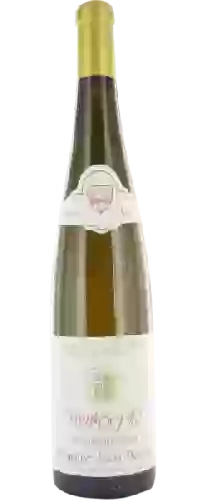The Domaine Léon Boesch of Alsace

The Domaine Léon Boesch is one of the best wineries to follow in Alsace.. It offers 44 wines for sale in of Alsace to come and discover on site or to buy online.
Looking for the best Domaine Léon Boesch wines in Alsace among all the wines in the region? Check out our tops of the best red, white or effervescent Domaine Léon Boesch wines. Also find some food and wine pairings that may be suitable with the wines from this area. Learn more about the region and the Domaine Léon Boesch wines with technical and enological descriptions.
How Domaine Léon Boesch wines pair with each other generally quite well with dishes of pork, rich fish (salmon, tuna etc) or spicy food such as recipes of flemish carbonnade, salmon lasagna or cambodian amok.
On the nose the white wine of Domaine Léon Boesch. often reveals types of flavors of citrus, minerality or earth and sometimes also flavors of tree fruit, citrus fruit or tropical fruit. In the mouth the white wine of Domaine Léon Boesch. is a with a nice freshness.
Alsace, located in the extreme north-east of France, is Distinguished from other French wine regions by its strong Franco-Germanic influences. These influences are the result of a back-and-forth between the German and French sovereignties over the last few centuries. They can be seen not only in the architecture and culture of Alsace, but also in the wines. Alsace wines are produced under three main appellations: Alsace and Alsace Grand Cru for still white wines (Sweet and Dry), and Crémant d'Alsace for Sparkling wines.
Almost all the wines produced in this region fall under one of these three appellations. Alsace Grand Cru wines are produced from one of the 51 privileged vineyards spread along the Length of the region. Alsace is the only French wine region to produce significant quantities of Riesling and Gewurztraminer. These two grape varieties are more commonly associated with German wines and are reminiscent of Alsace's history.
How Domaine Léon Boesch wines pair with each other generally quite well with dishes of shellfish, poultry or appetizers and snacks such as recipes of marco polo salad, chicken curry (like in reunion island) or fresh vegetable dips and their sauces for the aperitif.
On the nose the sparkling wine of Domaine Léon Boesch. often reveals types of flavors of cream, non oak or earth and sometimes also flavors of microbio, vegetal or oak. In the mouth the sparkling wine of Domaine Léon Boesch. is a powerful with a nice vivacity and a fine and pleasant bubble.
The white Chardonnay is a grape variety that originated in France (Burgundy). It produces a variety of grape specially used for wine making. It is rare to find this grape to eat on our tables. This variety of grape is characterized by small bunches, and small grapes. White Chardonnay can be found in many vineyards: South West, Burgundy, Jura, Languedoc & Roussillon, Cognac, Bordeaux, Beaujolais, Savoie & Bugey, Loire Valley, Champagne, Rhone Valley, Armagnac, Lorraine, Alsace, Provence & Corsica.
How Domaine Léon Boesch wines pair with each other generally quite well with dishes of veal, game (deer, venison) or poultry such as recipes of meatballs catalan style, whole duck casserole with white wine or coconut chicken.
On the nose the red wine of Domaine Léon Boesch. often reveals types of flavors of oaky, cranberry or non oak and sometimes also flavors of earth, microbio or oak. In the mouth the red wine of Domaine Léon Boesch. is a with a nice freshness.
A wine with a smooth texture reminiscent of fats.
How Domaine Léon Boesch wines pair with each other generally quite well with dishes of pork, rich fish (salmon, tuna etc) or spicy food such as recipes of zucchini lasagna, smoked salmon pasta gratin or royal couscous.
Auxerrois is a white grape variety native to Lorraine, which is also found in Alsace and in the Loire Valley, where it took off in 1950. Its name comes from the nurseries in Auxerre where it found refuge during the Second World War. Often called Pinot Auxerrois, it is part of the Moselle, Alsace and Côtes-de-Toul AOC grape varieties. Auxerrois should not be confused with côt or malbec, which are red grape varieties from the Cahors region and which may bear the same name. The bunches of Auxerrois are of medium size with small berries. It is a semi-late grape variety whose buds only come out when temperatures are well above 10°C. Auxerrois wines are characterized by finesse and acidity and subtle aromas of exotic fruits, fruits and white flowers. In France, it represents 1,600 hectares of production and some small parcels of Auxerrois are also present in Luxembourg, Germany, Canada and South Africa (2,300 hectares in total).
Planning a wine route in the of Alsace? Here are the wineries to visit and the winemakers to meet during your trip in search of wines similar to Domaine Léon Boesch.
Pinot noir is an important red grape variety in Burgundy and Champagne, and its reputation is well known! Great wines such as the Domaine de la Romanée Conti elaborate their wines from this famous grape variety, and make it a great variety. When properly vinified, pinot noit produces red wines of great finesse, with a wide range of aromas depending on its advancement (fruit, undergrowth, leather). it is also the only red grape variety authorized in Alsace. Pinot Noir is not easily cultivated beyond our borders, although it has enjoyed some success in Oregon, the United States, Australia and New Zealand.